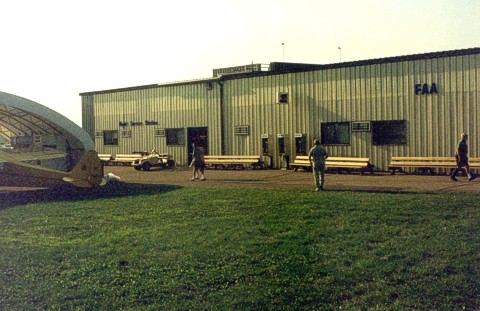
Oshkosh FSS (OSH), Wisconsin, July 1999
Oshkosh FSS during the annual fly-in

Oshkosh FSS (OSH), Wisconsin, July 1999
Oshkosh FSS during the annual fly-in
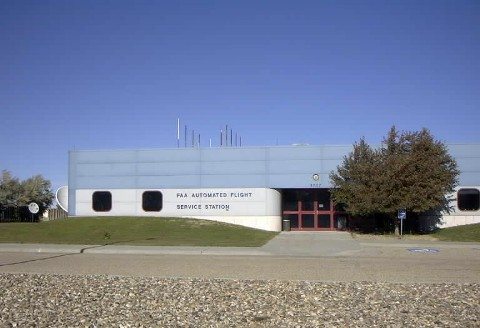
Casper AFSS (CPR), Wyoming, October 2002
The facility was decommissioned July 16, 2007.
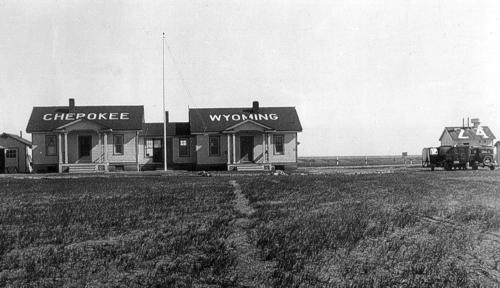
Submitted by Steve Wolff
Cherokee, Wyoming, Site 24, (year unknown)
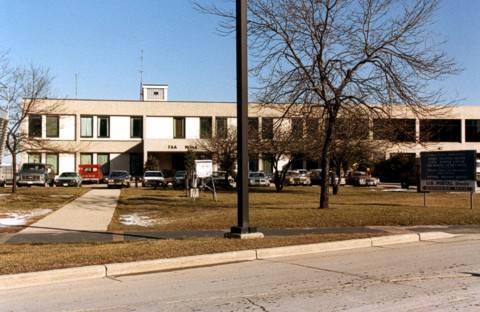
Milwaukee FSS (MKE), Wisconsin, December 20, 1984
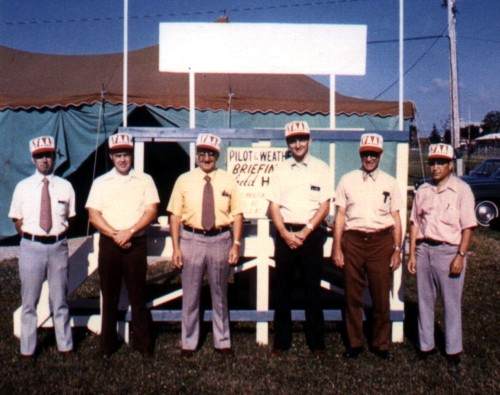
Submitted by Will Showers
Oshkosh Temporary FSS (OSH), Wisconsin, July 1974
The tent in the background was the 1974 temporary Oshkosh FSS. Names of employees (left to right) temporarily assigned to Oshkosh FSS during the annual Experimental Aircraft Association (EAA) event.
Jim McCollom, Detroit, Michigan FSS (DET)
Tom Cummings, (supervisor) Fort Wayne, Indiana FSS (FWA)
Louie Demers, Quincy, Illinois FSS (UIN)
Will Showers, Decatur, Illinois FSS (DEC)
Seldon Armbruster, Cleveland, Ohio FSS (CLE)
Mel Miller South Bend, Indiana FSS (SBN)
______________
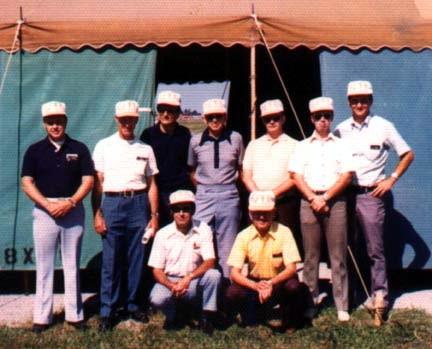
Names of employees (left to right)
STANDING
Tom Cummings, (supervisor) Fort Wayne, Indiana FSS (FWA)
Seldon Armbruster, Cleveland, Ohio FSS (CLE)
Steve Damian, Minneapolis, Minnesota FSS (MSP)
Bud Rugg, Wausau, Wisconsin FSS (AUW)
Ray Chezem, Milwaukee, Wisconsin FSS (MKE)
Jim McCollom, Detroit, Michagan FSS (DET)
Mel Miller South Bend, Indiana FSS (SBN).
Will Showers, Decatur, Illinois FSS (DEC)
KNEELING
Unknown
Ed Slaga, Chief, Greenbay, Wisconsin FSS (GRB)
______________
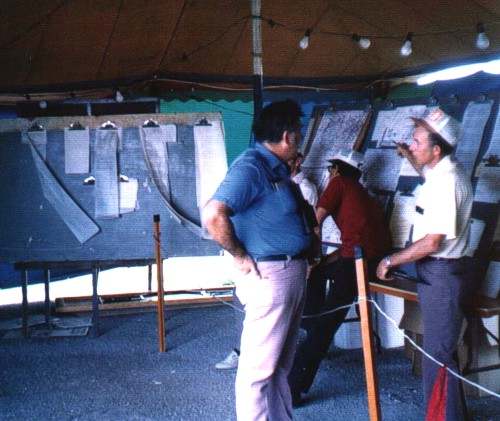
An interior photo of the 1975 temporary FSS tent showing the teletype paper and facsimile chart display. This photograph was taken the first day of the fly-in before pilots began checking weather for their flight home.
______________
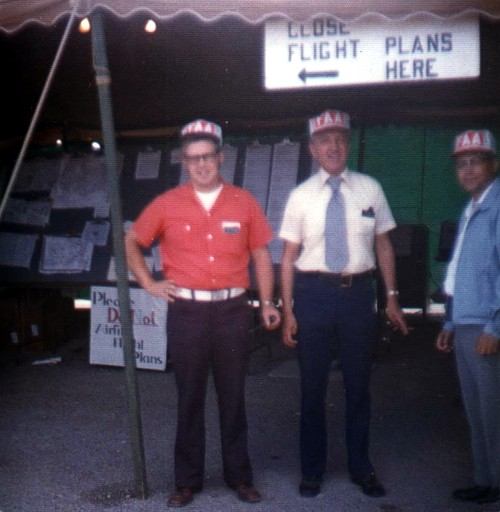
The interior of the temporary Oshkosh FSS tent with the teletype paper and facsimile chart display. Names of employees (left to right) temporarily assigned to Oshkosh FSS during the annual Experimental Aircraft Association (EAA) event:
Tom Cummings, (supervisor) Fort Wayne, Indiana FSS (FWA)
Ed Slaga, Chief, Greenbay, Wisconsin FSS (GRB)
Mel Miller South Bend, Indiana FSS (SBN).
______________
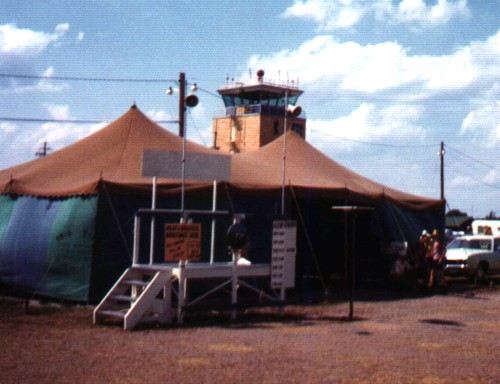
A tent was used both of the years 1974 and 1975. The interior of the tent was mostly unchanged from 1974 to 1975 except for the addition of the rope line to provide room for the pilot weather briefers to move back and forth between the pilots and the weather data display.
From 1974 to 1975 we did make changes to some of our procedures to improve efficiency. An example was aircraft overdue on VFR flight plans which was a very large problem in 1974. That year we spent many hours driving up and down the rows of aircraft looking for overdue aircraft. In 1975 we positioned two people to the side of the landing runway. They wrote down the registration numbers of the landing aircraft. When an aircraft became overdue, the list was then used to determine if the aircraft had landed. This saved many hours of searching.
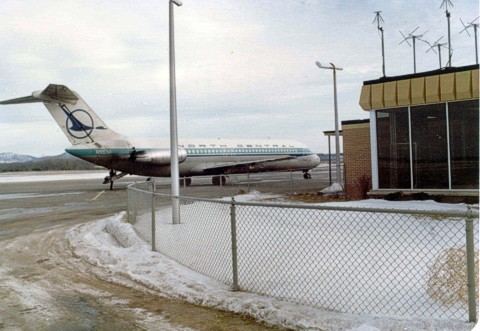
La Crosse FSS (LSE), Wisconsin, about 1980
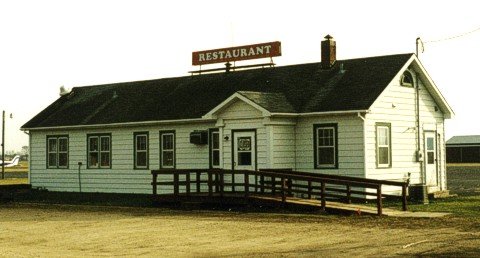
Lone Rock FSS (LNR), Wisconsin (date unknown)
This one needs a little explaining. After Lone Rock FSS was officially closed, the building was converted to a restaurant, hence the signage on the roof. However, this was the Lone Rock FSS building. The covered front entrance and the handicap ramp were recent additions, along with the sign.
The ATM’s (chief’s) office was located to the right of the entrance (corner windows). The first set of windows to the left of the entrance opened into the walk-in briefing area and operations. The far left half of the building was occupied by Airway Facility offices (far end) and FSS radio racks. The door on the right rear corner opened into the “break/locker” room, where the helium tanks for the weather balloons were stored. Out front in the parking lot was where the thermometer shelter was located and the wire leading off to the top right goes to the rotating beacon.
Henry Luxem was the last FSS manager (acting) at Lone Rock. Henry and Mark Carver, ATCS, locked the doors on a Friday afternoon. Lone Rock FSS officially closed March 4, 1983. Custodial property was turned over to La Crosse FSS at that time.
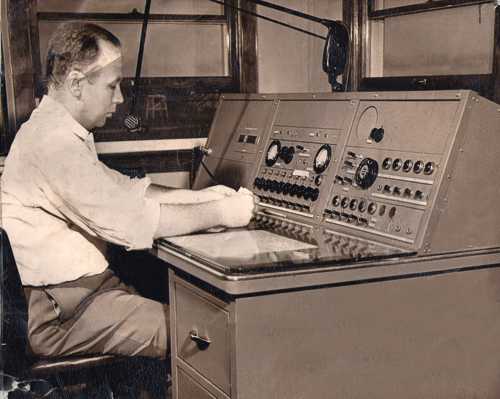
Eau Claire Radio Station, Wisconsin, 1949
Carroll Norgaard working the radio position
Eau Claire Flight Service Station Flight Assist Report, 1965
The following is a reproduction of a flight assist report by Donald A. Fetting and written by the Eau Claire FSS Chief, Roger Ferguson.
March 22, 1965
Flight Assist, N7814D, March 20, 1965
Chief, Flight Service Station, Eau Claire, Wisconsin
Chief, Air Traffic Division, Central Region
Attention: CE-520
A. March 20, 1965 2026GMT
B. N7814D
C. VFR flight plan. Shell Lake, Wis. to Pontiac, Illinois
D. VFR
E. Lost
F. VOR
G. None
H. Donald A Fetting working the air/ground position under the supervision of Carroll M. Norgaard. Pilot’s name H. E. Desjardins.
I. At 2026Z, N7814D, a Piper tri-pacer or colt, contacted Eau Claire and said he wished to land at Eau Clair. He reported discontinuing a flight on a VFR flight plan from Shell Lake, Wisconsin to Pontiac, Illinois due to weather. He advised that he was unsure of his position and requested assistance. The air craft was at 3,500 with 1 hour of fuel remaining. A close-in type VOR orientation was used successfully and at 2046Z, the pilot reported the Eau Claire airport in sight. At 2054Z, N7814D was safely on the ground at Eau Claire. The VFR flight plan was cancelled and the pilot extended his appreciation for the assistance. This is considered an average assist although the monitoring of the tape indicates that it was quite difficult to get the pilot to accept directions during the early part of the orientation.
Roger D. Ferguson
cc:
AT-400
CE-GADO-13
Mr. Fetting
Mr. Norgaard
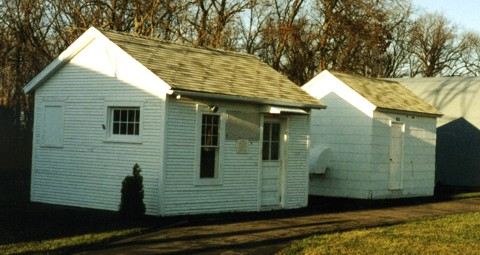
Mauston Aeronautical Light Station, Wisconsin, 1920’s
This picture is of the two buildings that comprised the Mauston Aeronautical Light Station in Mauston, Wisconsin. It was in that location from the early to mid 1920’s to approximately 1928. At that time, Mauston was decommissioned and the buildings moved to Lone Rock, WI.
The building on the left was the actual facility. The one on the right was the generator room. Sometime in the late 1940’s or early 50’s, the facility was replaced by a larger building, but the original facility building was maintained and used as a storage room. The generator building continued to house the emergency generator for Lone Rock FSS (LNR) right up to the day the facility closed. Around 1985 both buildings were again moved, this time to Oshkosh, WI and the EAA’s “Pioneer Airport” exhibit, part of the EAA museum.
______________
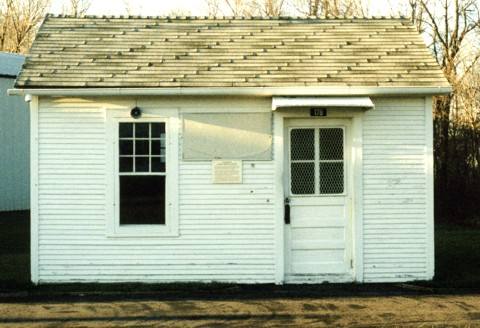 Another view of the original Mauston/Lone Rock FSS facility building. Notice the plaque on the front wall (see below). The interior has been restored to what it looked like in the late 1930’s, complete with teletype and old radio equipment. There is also a self guided recorded audio tour narrated by Ben Silko, a former LNR FSS specialist who retired in 1977.
Another view of the original Mauston/Lone Rock FSS facility building. Notice the plaque on the front wall (see below). The interior has been restored to what it looked like in the late 1930’s, complete with teletype and old radio equipment. There is also a self guided recorded audio tour narrated by Ben Silko, a former LNR FSS specialist who retired in 1977.
______________